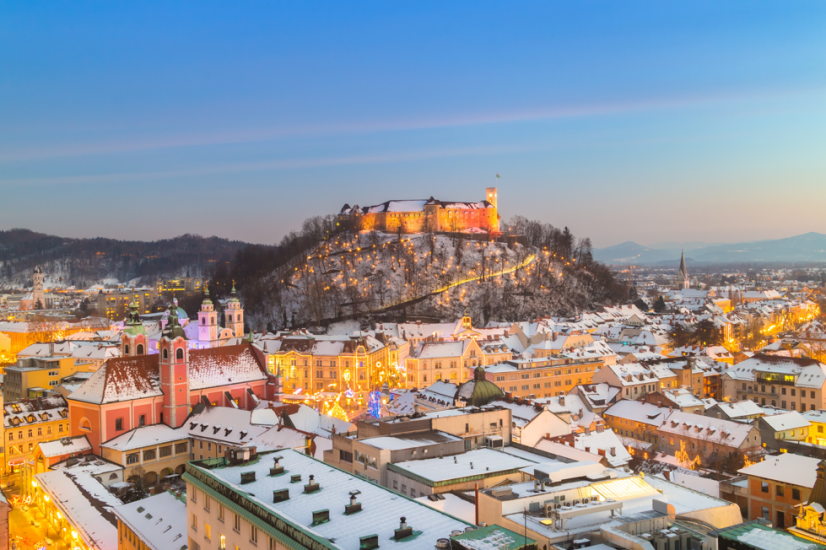Guide to Slovenia Weather Year Round
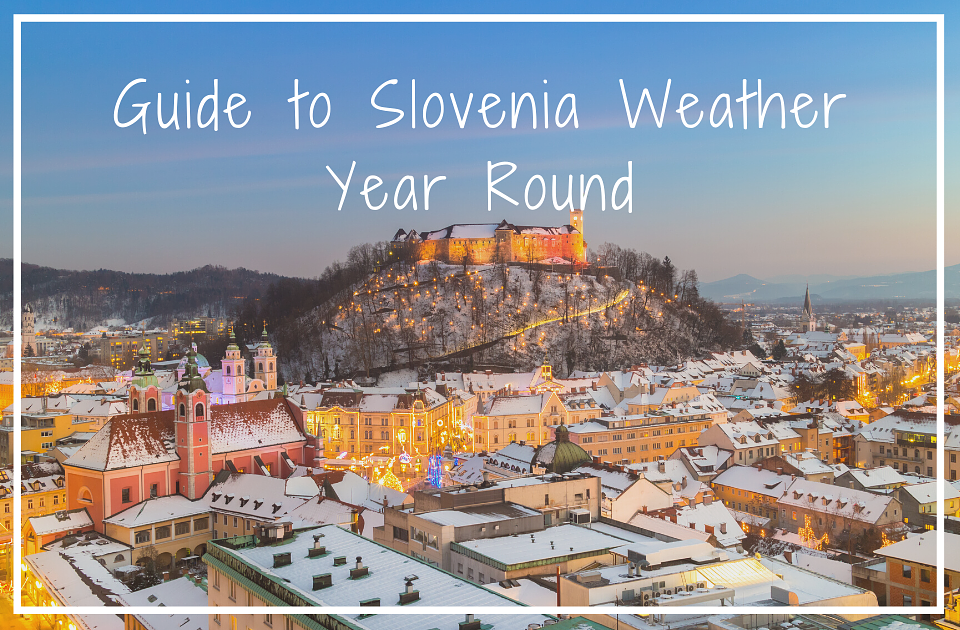
Posted on Wed 30 Jun 2021
The typically flat western side of the country can experience slightly warmer weather throughout the year. However, the more central and eastern locations that have more areas with higher altitudes can experience lower temperatures, both during summer and winter. For many that visit the country, they are often surprised by the warm weather, as Slovenia is typically seen as a ‘cold’ country by those who haven’t visited – this is certainly not true, at least during the summer!
If you’re looking to explore Slovenia and make sure you experience the best weather for your trip! Whether it’s snow-laden mountains during winter or sun-kissed city streets during summer, our guide below will ensure your trip is the best it can be!
Winter
December: Slovenia in winter is very much a ‘love it or hate it’ kind of experience. There are many advantages to visiting the country in winter, including the fantastic ski season that is available, especially in northern areas such as Maribor or Triglav National Park. December typically marks the start of the season; therefore, we’d suggest waiting until the latter part of the month before heading over to ski. In the cities such as Ljubljana and Piran, winter has the potential to be a bleak affair. However, if ghostly streets and buildings adorned with icicles are what you’re after, then you won’t be disappointed.
January: January is when the ski season really begins to kick in, with snow being a common occurrence during the month. In the higher altitudes, such as the ski resorts, you’ll likely find avid skiers who are visiting the country either for a more reasonably priced ski experience or to try a new challenge. Our husky experience is also very popular during January, offering you the chance to visit both the capital, Ljubljana, and the northern area of Lake Bled. January, along with December, is one of the coldest months of the year, with temperatures frequently dipping below zero. In more exposed areas, you’ll be met with cold winds, so make sure to wrap up warm and bring plenty of layer-able clothes. Rain is also frequent in winter, meaning waterproof top layers are a must, especially if you plan to explore outside of the capital and venture into more rural locations.
February: February is a great month to visit Slovenia, as days will be slightly longer than those over the Christmas period and snow will still be in abundance in the higher areas of the country. There is typically nine to eleven hours of daylight per day, and temperatures generally range between minus two and six degrees Celsius. February can also carry some rain so be prepared with waterproofs and warm clothes. This is also an excellent month to visit the cities, including the Ljubljana and Piran, as crowds will be fewer than in the coming months, giving you a chance to explore at your leisure.
Spring
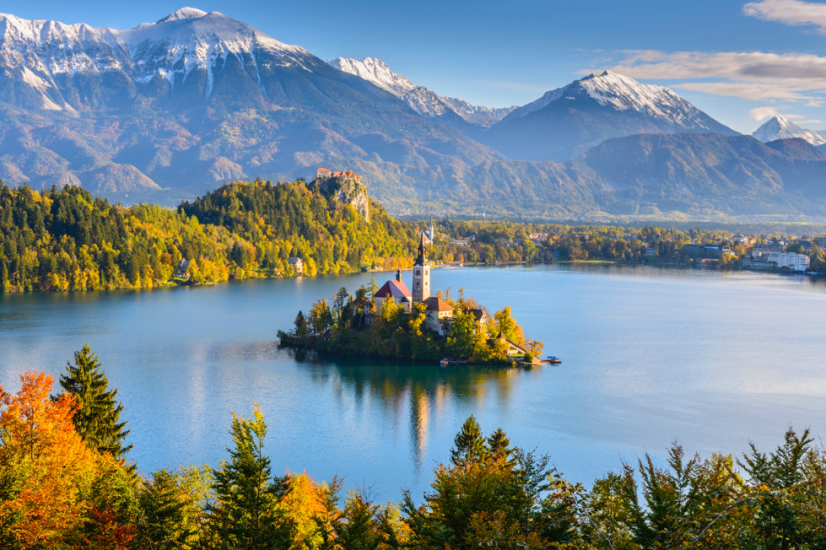
March: March can be a great month to visit Slovenia, especially if you plan to explore outside of the cities. The temperature is a little milder than the winter months, occasionally breaking into double digits, especially on the western side of the country. Snow will likely still be seen in the northern areas, but this doesn’t mean Bled and the surrounding areas are off-limits for non-skiers, as there’s still plenty to do there. By the end of the month, there will be close to 13 hours of daylight per day, giving you plenty of time to explore the cities and surrounding countryside. March is also the last month that we run the husky experience, so make sure you don’t miss out!
April: The weather can be a little unpredictable in April, occasionally spawning warm days with blue skies, while others can be rainy and miserable. As long as you come prepared, there is no reason you can’t enjoy some time in the country during this month. Higher temperatures across the country push into the double figures, and it is noticeably warmer in the capital, rain is less common, and you are guaranteed at least 12 or 13 hours of sunlight, sometimes more. Our two summer Slovenia experiences begin in April, allowing you to explore the country with the help of a bilingual guide.
May: Warmer weather and blue skies can be seen frequently in May – it is the perfect month to visit for those looking to avoid the crowds and still have a warm break away! You’ll likely encounter your first taste of temperatures above 20 Celsius, especially on the coast in Piran. In the northern alpine areas, the snow will have mostly melted away, leaving lots of biking and hiking trails for you to explore. Rainfall is not particularly frequent in May, meaning you can travel mostly without the worry of packing heavy-duty weatherproofs.
Summer
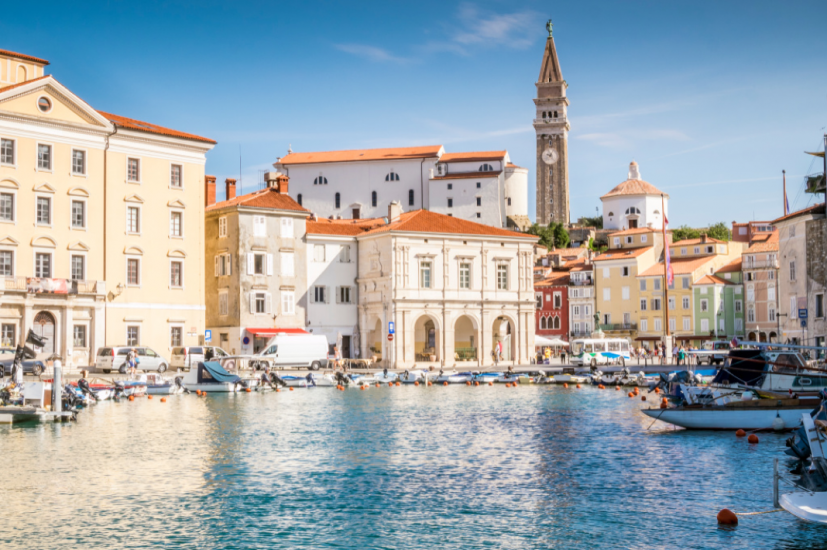
June: This is the month that the warm weather really begins to take hold of the country, with days frequently in the 20s and clear blue skies can be seen across Slovenia. With the coming of June, you can expect an increase in the number of people that head to the country, creating a holiday buzz around the capital and the coastal resorts, along with popular towns such as Bled. T-shirts and shorts are good choices in June; however, the evenings can still be chilly so be prepared with shirts, trousers and one or two warmer layers. In summer, although rain is less frequent, when it does rain it can be pretty heavy, so plan your holiday accordingly.
July: As in many northern hemisphere countries, July is typically the warmest month in Slovenia. With this warm weather, expect the bulk of the other visitors to be visiting in this seasonal period. Although the likelihood of rain is the lowest during July compared to other months, it is still possible, especially when venturing into the more alpine regions of the north; we’d suggest packing a lightweight waterproof jacket for this reason. Temperatures can range between the mid-20s into the 30s, especially in Ljubljana.
August: Another warm month, August is just as good of a time to visit Slovenia but is just as busy as July. August is when many of the schools in Europe have their summer breaks, so expect plenty of family travellers. The city of Ljubljana will be especially busy during this time, as will Piran on the coast. If you’re looking for busy holiday city vibes, then these months will be perfect, with lots of outdoor activities and dining options to choose from. Temperatures can drop one or two degrees in August compared to July, but there will still be plenty of sunshine and lots of clear blue skies. If you’re planning on visiting the country in August, we’d suggest booking flights and accommodation (or one of our tours) in plenty of time as they can book up fast!
Autumn
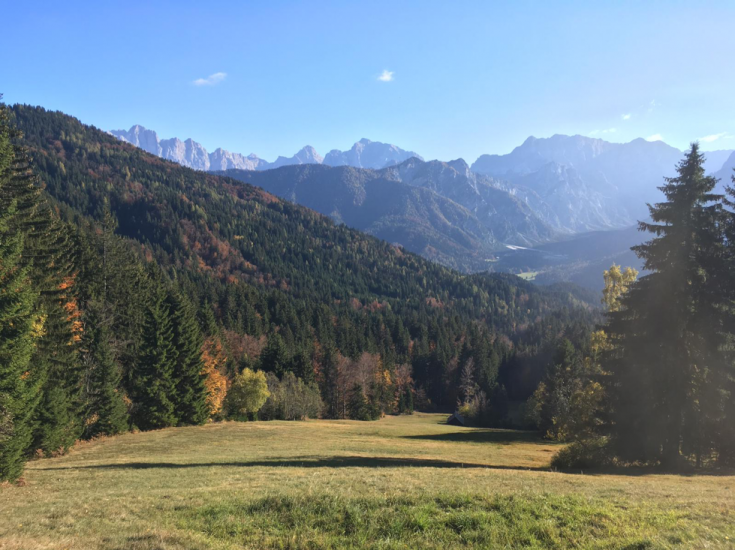
September: As children head back to school, crowds start to reduce, especially towards the end of the month. Similarly, temperatures begin to decrease in the more northern areas, and rain starts to feature more prominently. Because of Slovenia’s distinct seasonal changes, there are apparent differences between September and August, which suit some travellers more than others. For a cheaper and less crowded trip, September is the month to choose, but, for warm climates and buzzing atmospheres, August should be your month of choice.
October: Summer is comfortably in the past in October, as cold temperatures begin to creep in with highs in the cities of 16 Celsius and lows of seven Celsius. Typically, nine days of the month will experience rain, which makes it likely you’ll see some during your trip. That being said, there are plenty of great things about the country in October! The crowds have dwindled considerably meaning you can explore towns and cities without feeling rushed by keen tourists.
November: Last, but by no means least, November can be a magical month to visit this Central European gem. It is the last month in which our Slovenia Experience runs, allowing you to see an alternate side of the country during the colder months. Expect frosty temperatures, especially in northern or mountainous areas, with a strong likelihood of snow and rain. That being said, for those looking for a ‘cold holiday’ that want something a little different from Switzerland or Norway, then Slovenia can make a perfect, and slightly more affordable, substitute.
As you can see, unlike the UK, Slovenia has distinct and varied seasons, offering something for all travellers throughout the year. Why not check out our Slovenia experiences here, to see which one best suits your travel style? You can also find lots more info on our blog about Slovenia and the other countries we visit!
Read more from our blog here
